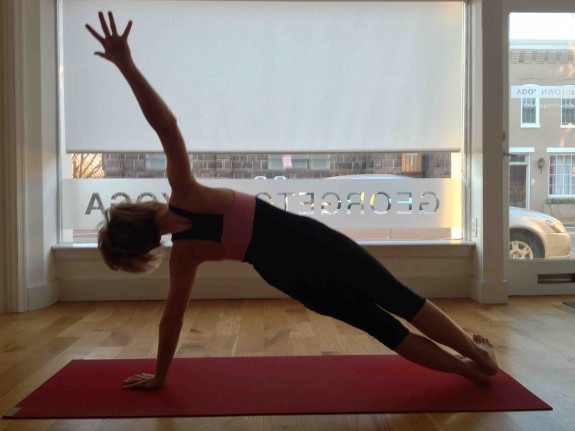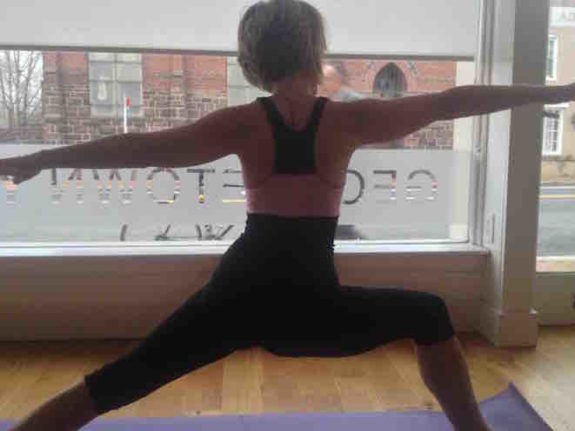Keep Calm and Carry On… Simple Techniques for Calming Isolation Stress
- At June 16, 2020
- By Katherine
- In Articles, News
 0
0

Stress, anxiety and depression are at all-time highs, according to recent studies. Feeling stressed is a normal reaction to today’s crisis, but if prolonged, it can disturb your immune, digestive, cardiovascular, sleep, and reproductive systems. You may also experience digestive symptoms, headaches, sleeplessness, sadness, anger, or irritability, according to the National Institute of Mental Health.
I’m sure you have already realized that “This is not a crisis that adrenaline can get us through,” as Brené Brown said, research professor and social worker at the University of Houston, in a recent webinar. “We are in a long duration marathon, and we have to find a sustainable way [to live],” she added
I can help you create the sustainable way to live that improves your overall well-being – based on your own personalized needs – with just a few virtual sessions. Habit building leads to greater health. Now is the perfect time to craft exceptional life satisfaction! You can book at Katherine@PersonaledNutrition.com
In today’s article, I’d like to share some simple techniques to help reduce your stress, increase your energy and improve how you feel and cope.
Even if you exercise, I recommend you add some form of meditation to your daily routine. Before rolling your eyes, many activities you already do can qualify. The only requirement is that your activity choice contains the four elements I’ve described below:
1. Meditation is a mind and body practice with a long history for increasing calmness and physical relaxation, improving psychological balance, coping with illness, and enhancing overall health and well-being, according to the National Institute of Complementary and Integrative Medicine.
In my experience, meditation can also help you control destructive, stress-related habits such as emotional eating, cigarette, alcohol, drug abuse, and other impulsive or addictive behaviors.
There are many types of meditation, but most have four elements in common:
1) A quiet location with as few distractions as possible;
2) a specific, comfortable posture (sitting, lying down, walking, or in other positions);
3) a focus of attention (a specially chosen word or set of words, an object, or the sensations of the breath); and
4) an open attitude (letting distractions come and go naturally without judging them)
Try these two easy techniques – music and / or meditative movement – that have worked for me and my clients:
- Music. Have you heard that music soothes the savage beast (inside all of us)? Science proves it. Choose music that can get you in the “zone” and involves the four elements (listed above). Medieval music is one of my favorites for relaxing. Gregorian chants are popular. How about Celtic Music? Gentle nature sounds, like birds chirping, waves pounding on a beach, and rainstorms are popular. Religious music has been used for thousands of years to help worshipers concentrate. Try Tibetan music, too. Whatever floats yer boat!
- Meditative Movement is my favorite form of meditation and great for beginners. It uses movement in conjunction with meditative attention to body sensations, posture, rhythm and breathing: Tai Chi, a centuries-old martial art, Yoga, from 3,000 BCE and Qigong, more than 4,000 years old, are considered meditative movement practices. Tai chi is easy and very relaxing. I especially like this 8-minute beginners video.
2. Regular exercise releases natural feel-good brain chemicals like endorphins and seratonin, increasing feelings of well-being and happiness while reducing depression and anxiety. It can prevent the conditions that may make COVID-19 lethal, like obesity, diabetes and hypertension, but also heart disease, stroke, cancer and cognitive decline. Getting out into the fresh air is ideal. The coronavirus is less likely to spread outdoors, according to infectious disease specialists, and mask-wearing is only needed if you can’t socially distance at least 6 feet. But if inside with the public, mask wearing is essential. I also have some inexpensive ideas for indoor home exercise.
If you are experiencing more than stress, like severe anxiety or depression, please seek medical help. About 30% of the general U.S. population have symptoms of depression and/or anxiety, as reported by a recent Centers for Disease Control survey, with the highest rate – 40% – in 18 to 29 year-olds.
Yoga for Low Back Pain
- At September 28, 2017
- By Katherine
- In Articles, News
 0
0
“At least 80% of adults experience low back pain at some point in their lifetime… In a large survey, more than a quarter of adults experienced low back pain in the past 3 months,” according to the National Institutes of Health’s National Institute of Neurological Disorders and Stroke (NINDS).
“Recent studies in people with chronic low back pain suggest that a carefully adapted set of yoga poses may help reduce pain and improve function (the ability to walk and move). Studies also suggest that practicing yoga (as well as other forms of regular exercise) might have other health benefits such as reducing heart rate and blood pressure, and may also help relieve anxiety and depression,” according to a NCCIH article.
Yoga, meaning “unity” in Sanskrit, “unites a mind and body practice,” according to a National Institutes of Health National Center for Complementary and Integrated Health (NCCIH)
Yoga is believed to have originated in the 5th or 6th centuries BCE in India. But it didn’t become popular in the west until the 20th Century. Just twenty years ago, if you practiced yoga, you may have been skeptically regarded as a “hippie” or “a little too new age.” But today, there seems to be a yoga studio on every corner. In fact, it’s become so mainstream, that my physical therapist recommended yoga to me for healing from my particular knee and back surgeries of last year (I’ve been a practicioner for at least ten years), though I adapt poses to my individual needs, per her instructions (and which you should do per your doctor’s instructions).
I recommend yoga or any other mindfulness meditation practices for my clients when changing their lifestyle habits. It is a simple yet powerful tool that can help you transform your health and your life. The mindfulness you can experience with yoga (or other forms of meditation) can help you become more focused and clear, for concentration to be more sustained. It can help you handle emotional situations more effectively by improving decision making and reducing impulsivity, as I relate in my article, “Mindfulness in Eating and Living,” and I describe in my book, “Diet Simple.”
Katherine’s Mantra for Transforming Your Life: Never Give In!
- At July 10, 2017
- By Katherine
- In Articles, News
 0
0
Thank you for writing me with your well wishes over the past few weeks. Your responses to my articles documenting my recent personal challenges have been heart-warming. I’ve especially enjoyed hearing your stories – many of you my clients – of how the skills I’m sharing in these pages are ones that have helped you maintain your healthy and happy lives. During my (25+ year) career, I’ve felt privileged to hear about your own life challenges through which you are working.
People look at my life and think it’s easy for me, and sometimes even tell me I couldn’t possibly relate to them or help them. I’m writing my story to disabuse you of that notion. Though, my clients very quickly perceive how similar my life has been to theirs, and understand why I’m so empathetic with their concerns.
“I’m no sacrosanct preacher looking down at a congregation of sinners. I’ve been there … And I know what it takes to come back from those depths of despair – and to stay on top!” I said in my book, Diet Simple. And I’d like to demonstrate how you can do the same, like my clients have, through the many years I’ve served them, and continue to do so.
I’ve been documenting my life’s recent transformation because I believe the steps I’m taking are relevant to anyone who wants to change their lives for the better. Everyone goes through hard times, and one of the most difficult, yet important skills for maintaining a healthy and happy lifestyle, is recovering from set backs.
One of my mantras through the years that I borrowed from Winston Churchill has been, “If you’re going through Hell, keep going … Never give in, never give in, never, never, never!” It is not always easy, including for me. That’s because we’re human and imperfect. But I firmly believe that we must live by this philosophy when it comes to doing good in the world or for ourselves.
In fact, studies of successful weight loss maintainers found that one of the differences between people who lose weight and keep it off versus those who relapse and gain their weight back is recovering from slips, instead of allowing them to snowball; seeing “mistakes” as normal, being kind to oneself, and getting over them.
My best case study demonstrating how powerful your response to slips can be is of Melissa, who spent many years struggling with her health and her weight. Today, Melissa is 50 pounds lighter than when we first started working together, maybe 15 years ago, and she’s kept it off for the past five years. But her journey was not an easy one. Melissa has insulin-dependent diabetes and was sent to me by her doctor to lose weight and improve her health. She desperately wanted to lose weight. She was 5’5″ tall, and slowly gained weight through her adult life until she weighed 200 pounds. She and her doctor wanted her to weigh under 150.
Like many people in Wahington, DC, Melissa is a highly educated, hard-working professional. She successfully directs a non-profit organization helping abused children. You could say Melissa – and her husband, John – are “workaholics.” They live for their work.
For at least ten years, Melissa would successfully change her habits and lose weight. Sometimes 20, sometimes 30 pounds. She’d feel happy, healthy, on top of the world; she loved the way she looked. But inevitably, when she’d go through difficult times – perhaps a holiday, a stressful family event, or a challenging work situation – she would slip up. And of course, you’re thinking, that’s normal, right? Well, Melissa didn’t feel that way. Any deviation from what she thought she should be doing made her feel so terrible that she’d fall into a depression. She was a perfectionist; and hard on herself. She started cancelling appointments, and wouldn’t return my calls. She disappeared. I lost contact with her. She gave up, felt ashamed. I felt terrible.
But amazingly she’d come back within a year or two – or three, though unfortunately having gained some, if not all, of her weight back. I was always happy to see her and pleased she was trying again. After about three failed attempts, we had (another) serious heart-to-heart about her perfectionism. We discussed her “disappearances,” which always led to weight re-gain. We discovered they were related to a slip she was ashamed of, or a time her work load or family life got too busy. She promised to never lose contact again. She agreed that no matter how hard things got that we would work through it together, no matter what.
Many times during our sessions (often by phone because she was so busy), Melissa would feel down and want to give up. But she promised to get in touch the next day(s) and to keep our appointment the following week, even if she felt she didn’t do well. This time we worked together, she kept her promises. Over time, she got used to “slipping up” now and then; she started regarding her slips as normal… okay… to be expected… and sometimes even planned as “splurges” or “taking a break.” Melissa had to learn how to get through the tough times, to put up with being too busy or stressed, feeling unsuccessful, or not getting results. And eventually, she’d always bounce back.
I enjoy staying in contact with Melissa. She sends me photos of herself at a gala, or in a new fabulous outfit, so I can see she’s having fun and staying fit. I like to keep up with how she and John are doing, and appreciate her staying in touch.
You could say I have a rewarding job. I would agree with you! Now, if I could only be perfect… Hmmmm
Working Through the Pain: Priming Your Mind for Change
- At July 03, 2017
- By Katherine
- In Articles, News
 0
0
I don’t know if you’ve noticed, but we humans don’t always think or behave rationally, even when it comes to our own self-interest. In fact, we can be so stubborn that we stand by while watching our own self-destruction. Sure, we want to make positive changes in our lives, and may even know what to do, but often can’t seem to overcome our inertia.
Changing your thinking, your emotions, and perhaps parts of your self-image may be necessary for becoming happier, healthier, more energetic, or achieving your ideal body weight. In the third installment describing my recent life transformation, I am sharing my progression through these steps (for the umpteenth time in my life), toward recovery from some difficult times.
Whether healing from an illness, surgeries, or even just experiencing a long run of being too busy to exercise or take care of yourself… Beginning again, becoming fit, or healthy can be a painful process and can seem almost impossible to achieve.
In my case, after knee and back surgeries, spending a good deal of time being sedentary, and even bed-bound, I tried jumping back into life too quickly many times. These false starts had the effect of delaying my healing, furthering my pain, exhaustion, and depression. I had to learn to take baby steps (funny, something I’m told I’m very good at helping my clients with while working toward improving their lives). I had to notice how my thinking, self-talk, emotions, and even my own identity were interfering with my successful recovery.
One of my revelations was that my self image as a fit and physically active person affected me negatively and slowed my progress for a couple of reasons. First, my inability to be physically active while recovering from surgeries made me perhaps more depressed than would be expected. That depression kept me from the world, isolated, and of course, we all know, that made my situation worse: physically and psychologically. Second, when I finally got the will to start moving, I didn’t know how to start slowly. I jumped right in, taking difficult yoga classes and walking too much. That caused pain and discouraged me from continuing to try. And this prolonged my convalescence.
After many such failures, I decided to try joining the world again. But this time, taking my own advice and doing it one baby step at a time! For this to work, I had to change my thinking. It is the cornerstone of any behavior change: Noticing your thoughts and deciding how to react to them. I decided it was time to notice the negative thoughts in my head that led to counterproductive behavior. Noticing self-defeating – and irrational – thoughts, such as “I’ll never be myself again,” or “I don’t want to go out and be seen unless I’m completely back in shape,” allowed me to change them to more rational and productive thoughts, such as, “of course, I’ll always be myself! And, besides, a little improvement is good for anyone,” or “people will still accept and like me, even if I’m not in great shape.” This officially is “cognitive therapy,” an accepted pre-requisite for behavior change, and one I use extensively to help my clients. My willingness to begin this process allowed me to accept my humanness, my need to proceed slowly. I decided to share my experience after finding so many people were surprised that this process could be difficult for me, the “expert.” I also wanted to share my experience so others would feel assured that this transformation is possible for anyone.
Before you can change the way you think, though, you’ll need to develop a sense of urgency about your goal, if you haven’t already. A sense of urgency, according to The Dalai Lama in “The Art of Happiness” – and scholars in this important field of psychological research, can be achieved two ways:
1) Remind yourself of your positive vision for success. For example, visualize yourself at your ideal fitness level, your goal weight, or see yourself feeling happy, healthy, energetic, and confident (see “Dream” in my book, Diet Simple), and
2) Ponder the negative consequences of not making a particular behavior change (a little fear can be a good thing – but just a little). I mean, after all, did I really want to feel terrible for the rest of my life? This may seem like an absurd question to ask yourself, but when your behavior doesn’t lead to positive outcomes, what else could the counter-productive behavior mean? What outcomes could you possibly expect besides negative ones? You may try this yourself by asking, for instance, in the morning as you’re considering two options: getting out of bed to exercise or sleeping just a little longer, “Do I want to feel good today? Or do I want to feel crummy today?” Another example, as you’re driving home from work and deciding to grab some carry-out or to go home to eat the healthy meal you’ve already planned. Ask yourself: “Do I want to achieve my weight loss goal (insert positive vision here) or will I accept being the same weight and having the same health problems for another year?” “Do I want to stop taking these darn medications or will I be taking them forever – and even increasing the dosage? What will my doctor say?” “What kind of example am I setting for my children, my spouse? Is this a behavior I can be proud of?” etc. You get the idea…
ACHIEVING INCREASED HAPPINESS
Outlining the consequenses of your actions and acting on your long term goals, as opposed to momentary desires, helps you grow as a person and become a happier person, according to scientific research. It increases your general happiness level because you are making decisions which contribute to your long-term goals.
THE DOWNWARD SPIRAL OF GIVING IN
Usually, when we do something that feels good momentarily, such as giving in and staying in bed for 30 more minutes of sleep in the morning instead of exercising, or grabbing a coffee cake at the coffee shop when we originally just planned on buying coffee, our happiness level may increase (“oooh, this feels yummy!”) – but it’s only a temporary blip of happiness. It goes back to the same level it did before – once the temporary experience wears off – and nothing changes for the better in our lives. We may even become more depressed as we continue to “give-in” to these unfulfilling momentary desires and dive into a downward spiral.
MAKING THE HARDER, BUT MORE SATISFYING CHOICE
If, instead, we say to ourselves, “I’m getting out of bed NOW! I’ll feel terrible if I don’t, and I’ll never achieve my goals,” or “Will stopping to get carry-out change my life for the better? I’d be better off going home and eating something healthy as I want to lose weight, lower my cholesterol, etc,” or “I really don’t need that coffee cake, and I’ll feel terrible after eating it, and will it make me happier at the end of the day?” “Will this increase my happiness for the short term? Or for the long term?” Another more extreme example might be a drug addict relapsing. It feels great momentarily, but the feeling doesn’t last.
When you make a more thoughtful decision, which contributes to your longterm health – physical or psychological – you are more likely to achieve your life’s hopes, dreams and goals, you can actually increase your happiness level, feel happier more often and grow as a person.
WHY IT’S NOT ALWAYS EASY
It is not always easy in our society to make the healthy decision. It’s easier – and the norm, in fact – to be unfit, overweight and unhealthy. But, I’m convinced it is possible to be healthy in an unhealthy world with planning, practice, determination, and support (I’m here any time you need me!) – Besides, what’s the alternative?
It takes effort to train your mind to work this way, but this is how we become better people and we advance as a society.
Mindfulness in Eating and Living
- At January 09, 2011
- By Katherine
- In Articles, News
 1
1

Mindfulness Through Yoga – Katherine doing a side plank
“There are many health benefits to being more mindful,” says Jack Killen, MD, Deputy Director of the National Institutes of Health’s National Center for Complementary and Alternative Medicine.
Meditation – and similarly centering prayer – for the religious among you, establishes pathways in the brain which improve impulse control, helping you work through problems and decisions more effectively. This simple, yet powerful, tool can transform your health and your life as it helps you make the decisions you need to make your life more satisfying, for instance, decisions about eating and exercise can be done more thoughtfully and purposefully..
In the Diet Simple chapter, “How to Beat Emotional Eating,” I give you a step-by-step guide to understanding how your feelings influence your eating.
The following are excerpts from a recent interview with Jack Killen explaining how meditation works to help you regulate your emotions, so you can reign them in to make healthier decisions for your long-term benefit:
Katherine: What is mindfulness?
Dr. Killen: Mindfulness is the ability to be present, more focused, and clear; for concentration to be more sustained, and for attention to be on what’s happening, instead of on thoughts, memories, and associations.
Katherine: Why is it important to be mindful? What are some scientifically proven benefits?
Dr. Killen: There is neurobiological research demonstrating that mindfulness engages pathways in the brain associated with emotion and impulse control, attention, and focusing. It allows your brain to be focused on what is here and now so you are better able to respond to situations appropriately. People who are more mindful are better able to handle emotional situations in more appropriate ways, are more able to think through a problem, are less likely to be distracted by issues that won’t help… There is evidence that you improve at mental tests, that emotion regulation is better and more appropriate, blood pressure is lower, stress hormones are lower, thereby reducing stress.
Katherine: How can one become more mindful? I understand prayer or meditation may be helpful?
Dr. Killen: There is a lot of evidence accumulating that meditation in all of its forms has beneficial physiological effects. Meditation is a way of exercising neurological pathways in the brain which help us become more mindful. But it is a bit like going to the gym and working out your muscles. It takes time and practice for the beneficial brain pathways to become established, similar to building muscular strength and flexibility.
Katherine: What are some examples of meditation which may have these kinds of emotional and behavioral benefits?
Dr. Killen: There are many ways you can train your mind to be more mindful. The jury is still out as to whether one is better than another. More likely, certain types of meditation will work well for certain people, and other kinds for other people. We are still working on how to measure and study meditation.
There are several types of meditation. “Mantra” meditation is repeating a phrase, or something with deep meaning over and over, or focusing on a candle, for instance. “Mindfulness” meditation is focusing on what is happening now instead of on thoughts, memories, and associations.
Katherine: Are yoga, tai chi, and other forms of exercise considered good ways to achieve mindfulness?
Dr. Killen: While mind/body interventions are difficult to research, there are some encouraging data. Yoga and meditation are intertwined in many ways. Studies suggest yoga is useful in increasing lung capacity, improving mood, well-being, posture, and there are similar benefits with Tai Chi. But there is a larger body of research on meditation and its benefits.
Katherine: Is there scientific evidence that these mind/body interventions such as meditation or yoga will promote healthier lifestyles?
Dr. Killen: This is what we are studying at the Center for Complementary and Alternative Medicine. Getting definitive answers to those questions through rigorous scientific research could make these kinds of health interventions more widely available. Important work going on right now is defining research methods. We need to understand, for instance, which yoga postures (“asana”) benefit your health and in what specific ways? If we want to make health interventions more widely available and accepted, we need to be able to describe their effects better, thus magnifying their benefits. We are currently studying if these mind-body interventions are a means to help people with metabolic syndrome, if they’d be useful in weight-control programs, helping people eat less, or more healthfully.
















